Structure Of The Developed Image
Description
This section is from the "Studio Light Incorporating The Aristo Eagle - The Artura Bulletin 1919" book, by Aristo Motto. Also see Amazon: Studio Light Incorporating The Aristo Eagle - The Artura Bulletin 1919.
Structure Of The Developed Image
Every photographer has had a desire to see the grains of silver as they appear in an emulsion and as they appear in the negative after development. Experiments in our Research Laboratory have given us some excellent photomichrographs which are of unusual interest.
In Figure 1, the photographs, taken through a very powerful microscope, show crystals of silver bromide before development, on the left, and on the right, some crystals that have been changed into metallic silver by development.
The crystals before development are transparent except where they are seen sideways or where their edges appear darker. After development the clear yellow silver bromide is turned into a black coke-like mass of silver in exactly the same position as the crystals from which it was formed.
You never see these silver grains with the naked eye. When you look at a negative it appears perfectly smooth, but under a small degree of magnification it begins to show an appearance of graininess. What you really see is large masses or clumps of grains. With an increase in the magnification you also see the smaller clumps of grain and finally, at a very high magnification, you see the grains themselves. Figure 2.
The clumps of grains seen under low magnification are made up of grains which are in several layers. This can be seen by making a photograph looking down on the surface and then cutting through it and making a photograph of the cross section to see how the grains lie one below the other. In Fig. 3A it will be seen that the image is as much as six grains deep, so that many of the clumps of grains seen in Fig. 3B are not made up of grains in the same layer, clumped together, but grains in different layers entirely separated.
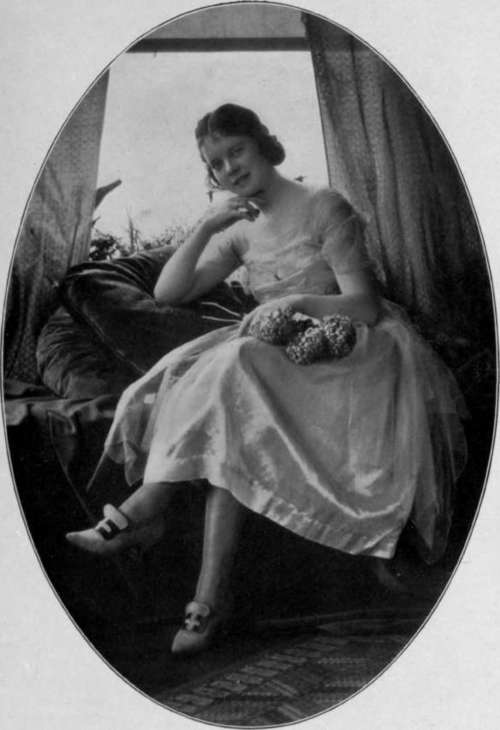
Eastman Portrait Film, Artura Print Made directly against the light From a Demonstrator's Negative.
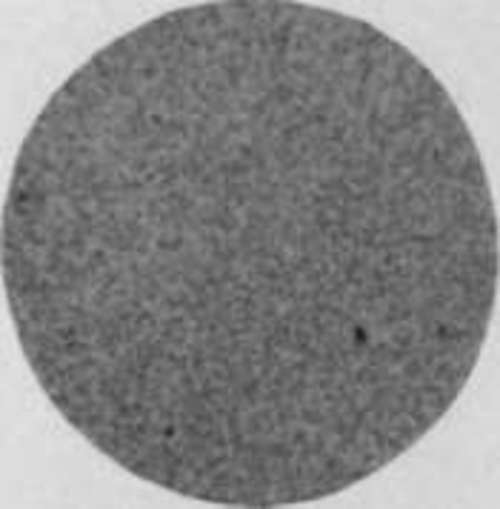
Enlarged 20 diameters.
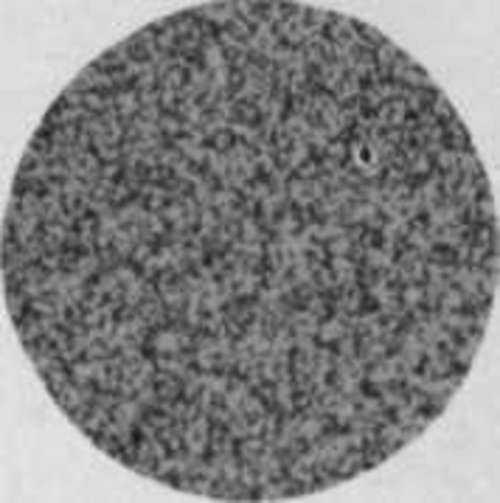
Enlarged 100 diameters.

Enlarged 400 diameters.

Enlarged 000 diameters.
Fig. 2.
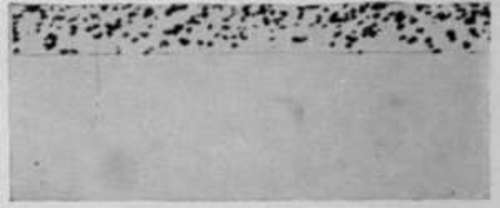
Fig. 3A - Cross Section.
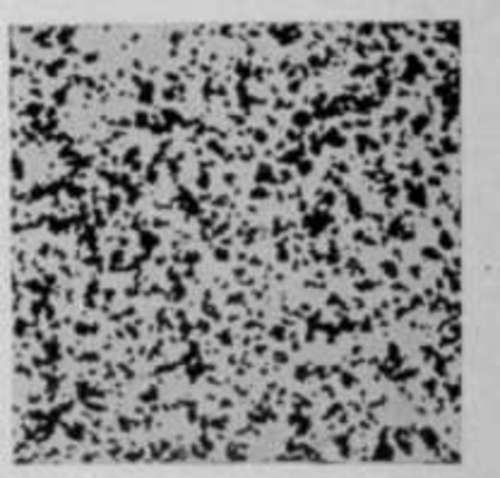
Fig. 3 B.
The distribution of developed grains in the depth of the film is interesting. It might be thought that with short exposures the image would be on the surface of the film and that as exposure was increased the light would penetrate farther into the film making the grains in the lower layers more and more developable. This sometimes seems to be the case, but with most emulsions it is not, as the illustrations in Fig. 4, cut from a film, will show.
All four of these examples were fully developed so that any effect development might have on the result is eliminated. They show that the grains are exposed in all parts of the film to an almost equal extent, though in the second and third examples there is a slight tendency for the image to be more on the top of the film.
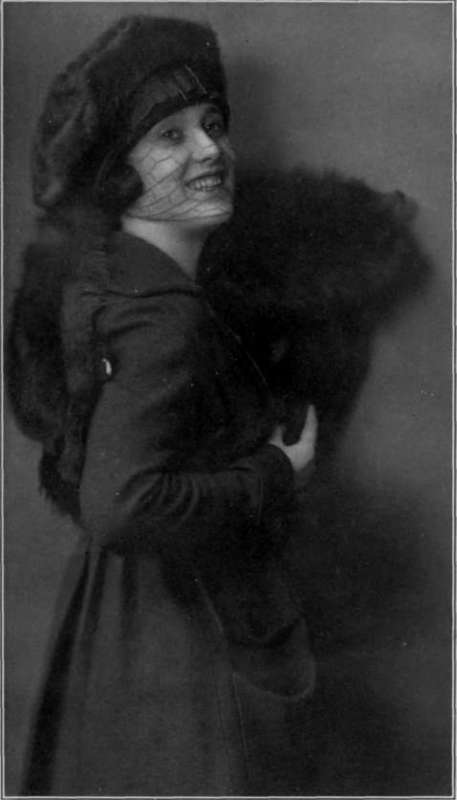
Eastman Portrait Film, Artura Print From a Demonstrator's Negative.
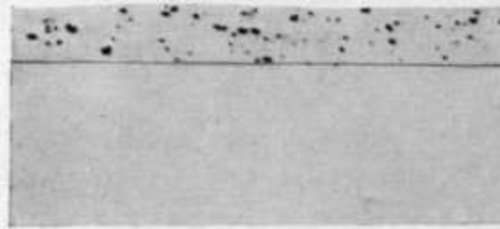
Fig. 4. No. 1.
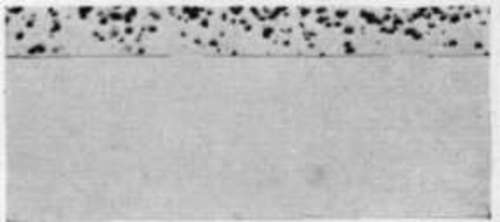
Fig. 4. No. 2.

Fig. 4. No. 3.
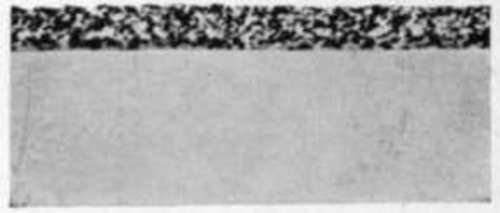
Fig. 4. No. 4.
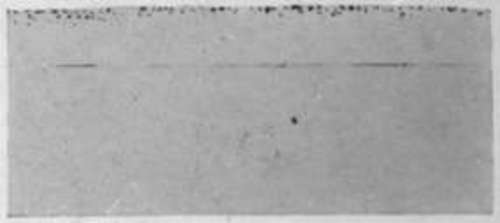
Fig. 5. No. 1.
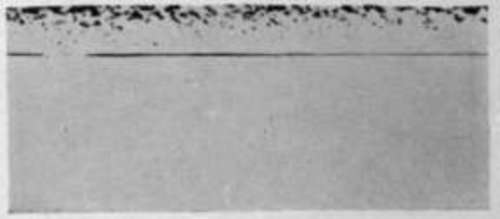
Fig. 5. No. 2.
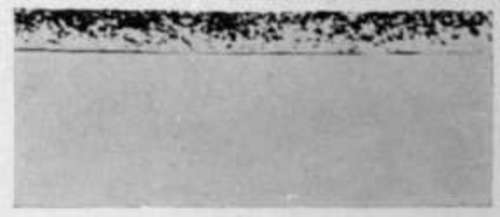
Fig. 5. No. 3.
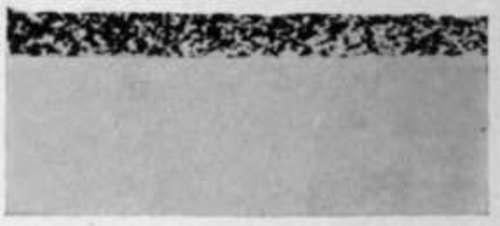
Fig. 5. No. 4.
While we do not know for a certainty, it looks as though the emulsion contains grains of various degrees of sensitiveness, and the more sensitive grains are made developable first.
During development,however, there is an appreciable effect due to the penetration of the developer into the film. This is shown in Fig. 5. It is seen that at the beginning of development, only the silver grains near the surface are developed, and then as the developer penetrates into the film it develops more and more deeply into it.
In the case of a strong developer this effect is accentuated because a strong developer will develop the surface to good density before it has penetrated through the emulsion. A weak developer will penetrate at the same rate as a strong developer but will not develop so rapidly, so that with a strong developer there is a tendency for the image to be confined to the surface of the emulsion, and with the weaker developer, for it to penetrate through the whole emulsion.
This effect is plainly shown in Fig. 6 where two photographs are shown of the edge of a developed image, the image being shown as the dark part on the left, while on the right is the slight deposit of grains due to fog which is always more or less present.
In the upper picture the image was developed with a very strong developer, while in the lower picture it was developed with a much weaker developer. It will be noted that the weak developer has penetrated right through the image to the back, while the strong developer has only penetrated about half the thickness of the emulsion, although care was taken to develop the images to the same apparent density.
There is a curious effect shown in these photographs at the point marked A. It is seen that at the edge of the developed image the fog grains are not developed in the lower part of the film but appear as if they had been eaten away. There is no doubt that the reason for this is that the bromide liberated during development of the heavy image has prevented the fog grains close to the edge of the image from developing. In extreme cases this will sometimes surround a dense image with a distinct line.

Eastman Portrait Film, Artura Print From a Demonstrator's Negative.

Developed with strong developer.

Developed with weak developer.
Fig. 6.
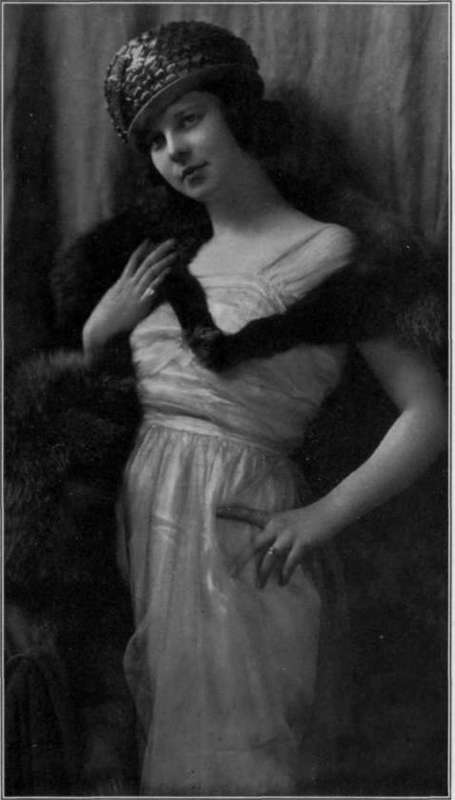
Eastman Portrait Film, Artura Print From a Demonstrator's Negative.
Continue to:


